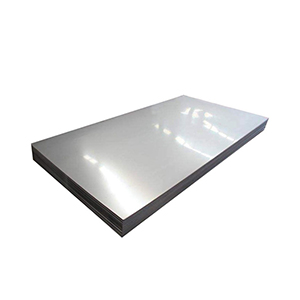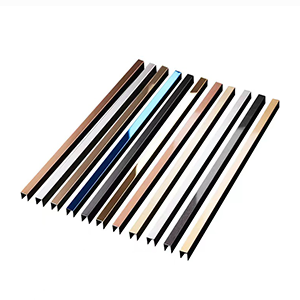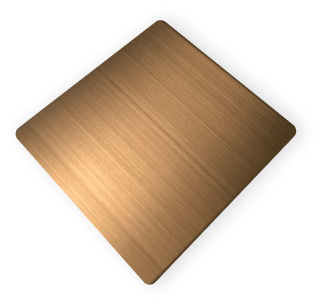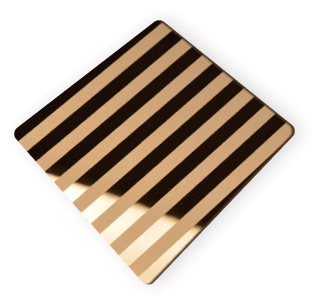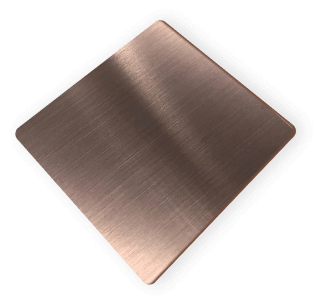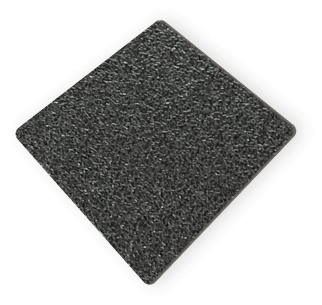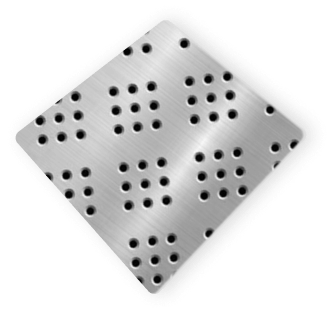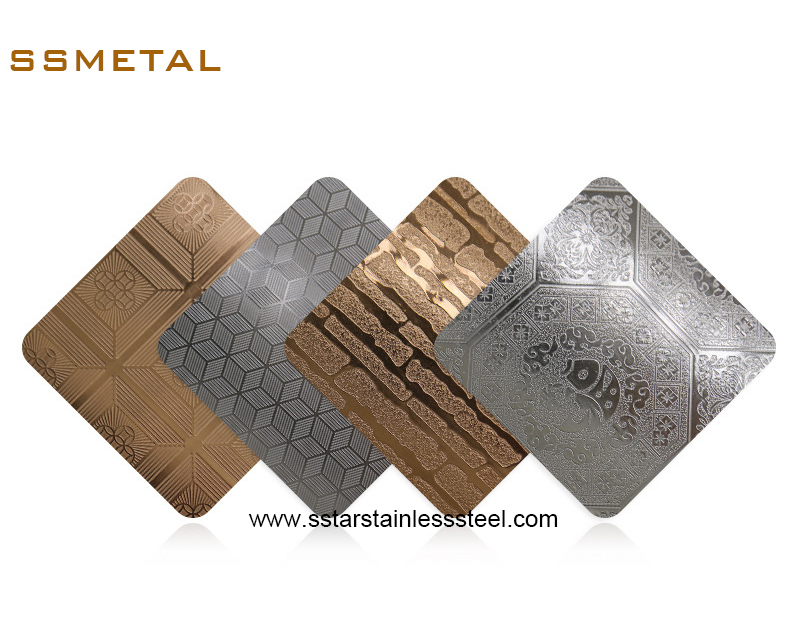Stainless steel cookware is a popular choice for professional chefs and home cooks. However, with so many options available, it can be challenging to know which type of them is best suited to you. In this article, we will explore everything you need to know about stainless steel for cookware.
What Is Stainless Steel?

Source: Pinterest
Stainless steel is a type of steel alloy that contains a minimum of 10.5% chromium, as well as other metals such as nickel, molybdenum, or titanium. Steel, which is an alloy of iron and carbon, is highly durable and resistant to warping, scratching, and chipping.
However, it is not very effective at resisting corrosion on its own. To enhance its durability and resistance to corrosion, manufacturers mix chromium with steel to produce stainless steel. When chromium reacts with oxygen, it creates a strong outer layer that is highly resistant to corrosion. The corrosion resistance of stainless steel increases with higher chromium content, while a minimum of 10.5% by weight is necessary for steel to be classified as stainless.
Is Stainless Steel Safe for Cooking?

Source: Pexels
Stainless steel is generally considered safe for cooking because it is non-reactive and doesn’t leach chemicals or metallic flavors into food. And the first thing to do is to choose cookware that meets the standards, and to choose stainless steel supplier carefully.
Note as well that some grades of stainless steel may contain other elements like nickel, which can potentially cause allergic reactions in some people.
It’s also important to note that while stainless steel cookware is generally safe, it can still pose a health risk if it is scratched or damaged, as this can create areas where bacteria can grow. Additionally, it’s important to follow proper cooking and cleaning techniques to ensure the safety and longevity of your cookware.
1. Food Grade Stainless Steel

Source: Unplash
Food-grade stainless steel necessitates at least 16% chromium by weight and comprises nickel, enhancing its corrosion resistance, and adding a silver-like luster. This article specifically focuses on food-grade stainless steel. According to the NSF international standard, food-grade stainless steel must belong to the 200, 300, or 400 series, and we will discuss more about this below.
The 300 series is the most well-known type of stainless steel used in cookware and includes 304 and 316 variations. The 304 series is made of 18/10 or 18/8 stainless steel, indicating the percentage of chromium and nickel respectively. Both types have similar performance, despite what advertisers may describe. 304 stainless steel is nonmagnetic, nonreactive, and belongs to the austenitic metal family, which contains low levels of carbon and high levels of chromium and nickel, making it the most commonly used food-grade stainless steel.
On the other hand, 316 stainless steel is less prevalent and contains more molybdenum, which makes it even more corrosion-resistant than the 304 series. As a result, it is employed in marine environments and biomedical implants. While in everyday cooking, the difference between 304 and 316 stainless steel is not noticeable. The primary distinction is in their corrosion resistance, but for the majority of standard kitchens, there is insufficient humidity or saltwater to make a significant difference.
The 400 series is made of 18/0 or nickel-free stainless steel and is primarily used for flatware and mixing bowls. It may be less expensive than the 300 series, but it is less durable and less corrosion-resistant. Additionally, it loses its shine more rapidly over time than the 300 series. Although the 400 series is mostly nickel-free, it still contains minimal amounts of nickel at 0.75%. Those with severe nickel allergies may consider other metal types.
Lastly, the 200 series is the lowest-quality option, and usually falls under budget cookware. Instead of nickel, it is made of manganese, which is less expensive but less corrosion-resistant. Nevertheless, it is food safe and non-magnetic. If you have a tight budget but do not want standard aluminum, this may be a good choice.
2. Magnetic(Nickel-free Stainless Steel)

Source: Pixabay
Magnetic (nickel-free) stainless steel is a type of stainless steel without any nickel. It is called “magnetic” because it can be attracted to a magnet, which is different from regular stainless steel that is not magnetic.
Magnetic stainless steel is often used in kitchen utensils because it works on induction cooktops.
One advantage of magnetic stainless steel is its nickel-free composition. which can cause allergic reactions for some people. Additionally, it is more affordable because it is not made of the expensive metal nickel.
However, magnetic stainless steel may be more prone to rust and stains than regular stainless steel, and may not be as durable over time.
Magnetic stainless steel cookware is a good option for those who are looking for an affordable, nickel-free cookware works on induction cooktops. However, it is important to be aware that it may not be as durable as traditional stainless steel and may require more maintenance to prevent rust and stains.
Stainless Steel Cookware Pros and Cons

Source: Pexels
Stainless steel cookware is a favored choice among both professional chefs and home cooks. Four advantages are as follows.
- It is non-toxic, durable, and long-lasting properties.
- It is an excellent option for various cooking methods, such as boiling, sautéing, and baking. Its impressive heat retention capabilities make it particularly well-suited for small-batch baking, ensuring that food cooks evenly throughout.
- Caring for and cleaning stainless steel cookware is hassle-free, making it a particularly beneficial choice for novice cooks and those who are living on their own for the first time. After use, just wash with hot soapy water or use steel wool to remove any grease layer that may accumulate.
- Stainless steel cookware is highly versatile, and stainless steel product is of various types. They are available in a range of sizes and styles, from frying pans and pots to griddles, lasagna pans, muffin tins, baking sheets, and roasting trays.
However, there are some disadvantages to using stainless steel cookware that you should be aware of.
- Heat distribution. Stainless steel cookware is not the best conductor of heat. It can create hot spots which would lead to uneven cooking. For example, when cooking a steak, the part of the steak on the hot spot of the pan may cook faster than the rest, making the steak unevenly cooked. To avoid this, it’s important to use lower heat settings and to preheat the pan before adding the food.
- Food sticking Stainless steel cookware can be prone to food sticking to the surface. This is especially true if the cookware isn’t properly preheated or if the food isn’t properly oiled. When food sticks to the surface, it can make cooking certain dishes more challenging. For example, when cooking eggs or pancakes, it can be tough to flip them without sticking. To avoid this, it’s important to preheat the pan properly and to use enough oil or butter.
- Reactivity Stainless steel cookware can react with acidic foods, causing discoloration or imparting a metallic taste. This can be a problem when cooking dishes with acidic ingredients like ketchup or citrus-based marinades. To avoid this, it’s best to use non-reactive cookware like glass, ceramic, or enamel-coated cast iron for acidic dishes.
- Maintenance Stainless steel cookware requires regular maintenance to keep it looking and performing its best. It can be prone to scratches and stains, and may require special cleaning products or techniques to keep it in good condition. For example, using abrasive scrubbers or harsh cleaning products can scratch the surface of the cookware, leading to more food sticking and discoloration. To keep stainless steel cookware in good condition, it’s best to clean it with a mild detergent and a soft cloth or sponge.
How to Avoid Sticking

Source: Pexels
Achieving a non-stick cooking experience on stainless steel cookware can be achieved through several simple techniques.
First, it’s important to cook on medium heat, as it not only prevents food from adhering to the surface but also allows it to release effortlessly.
Additionally, to prevent warping, it’s crucial to avoid immediately soaking the pan after cooking, instead allowing it to cool before cleaning. Once cooled, the pan can be easily cleaned by immersing it in warm, soapy water, effectively removing any remaining food residue.
For stubborn stains and discolorations, vinegar and water or Barkeepers friend are highly effective solutions that can restore the pan’s shine and remove unsightly stains. However, over-soaking the pan for extended periods of time should be avoided as it can cause pitting, which can compromise the cookware’s durability and longevity.
Lastly, acidic foods such as tomato-based products should be avoided to prevent damage to the stainless steel cookware.
How to Clean & Maintain Stainless Steel Cookware?

Source: Pexels
Following these tips, you can keep your stainless steel cookware, or ss cookware for short, in great condition for years to come. Proper cleaning and maintenance will not only extend its lifespan, but it will also ensure that your food is cooked in a safe and healthy manner.
- Clean the cookware after each use using hot, soapy water and a non-abrasive sponge or cloth. This helps remove any food particles or residue that can stick to the surface.
- Avoid using harsh cleaners or abrasive sponges that can scratch the surface of your cookware. Instead, try using gentle cleaners such as baking soda, vinegar, or lemon juice.
- For tough stains or discolorations, use a stainless steel cleaner. Follow the manufacturer’s instructions carefully and test the cleaner on a small, inconspicuous area before using it on the entire surface.
- Avoid using metal utensils on your ss cookware as they can scratch the surface. Instead, use wooden, silicone, or nylon utensils.
- Store your cookware in a cool, dry place to prevent moisture and humidity from causing rust or discoloration.
- Occasionally polish your cookware with a microfiber cloth and stainless steel polish to restore its shine and prevent rust.
SS Cookware Rust, How to Avoid and Clean?
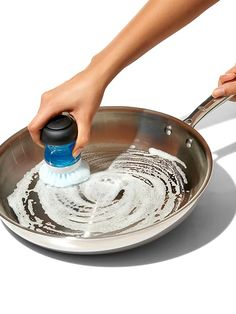
Source: Pinterest
To prevent rust on your ss cookware, follow these steps:
Step 1: Clean regularly with mild detergent and water. Wash your cookware with a mild detergent and water, using a soft cloth or towel to dry it thoroughly. Avoid using abrasive cleaning tools or harsh chemicals that could damage the protective layer on the surface of the stainless steel.
Step 2: Store in a dry place. Store your cookware in a dry place away from moisture and humidity to prevent rust from forming on the surface.
Step 3: Avoid salt and acidic foods. Prolonged exposure to salt or acidic foods can corrode the stainless steel and cause rust to form. Be mindful of the types of food you cook in your ss cookware.
In case your stainless-steel cookware loses its shine or gets stubborn spots, it’s probably showing signs of rust. You can clean it in the following way to remove rust spots, restore it to its original state, or prevent further rust.
- Remove rust with baking soda and water. Apply the mixture to the affected area, then scrub with a non-abrasive sponge or cloth. Rinse thoroughly and dry completely.
- Use powdered Bar Keepers Friend .It can be your ultimate solution for restoring it. To remove any hard-to-remove spots, you can make a paste with the cleaner, apply it to the pan, and allow it to soak in for several hours or overnight.
- Avoid using abrasive materials like steel wool or scrubbing pads which would cause scratches, and opt for non-abrasive alternatives like Dobie pads.
- Pay attention to the cleanliness around the rivets. Most stainless-steel pots and pans have firmly attached handles with rivets, and they tend to accumulate residue around the rivets. Therefore, it’s crucial to clean around the rivets every time you wash your cookware.
How to Choose the Best SS Cookware for You?

Source: Pexels
To determine the quality and build of your stainless cookware, there are several factors you should consider.
1. Weight
Although Stainless steel is heavier than aluminum, this cookware should still have a nice weight to it. Avoid pots that are too heavy to move, but look for pans with heft. Heavier pans are less likely to warp, or develop hot spots.
2. Grade
The grade of stainless is critical. The 300 series is the most popular for a reason: it lasts longer and resists corrosion. Invest upfront in 18/10 or 18/8 stainless for maximum corrosion resistance and the most durable cookware.
Key Takeaway

Source: Pexels
Stainless steel cookware is a worthwhile investment that can last a lifetime if properly maintained. When choosing ss cookware, consider its safety level and weight. A good stainless steel sheet supplier can provide us with safe and durable cookware. To ensure non-stick cooking and avoid overheating, use oil or cooking spray if necessary. To maintain the cookware’s appearance, wash cookware regularly with mild soap and water. Wish you can enjoy safe and satisfying cooking with ss cookware.






